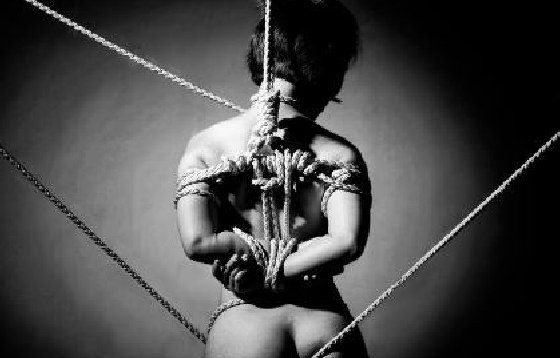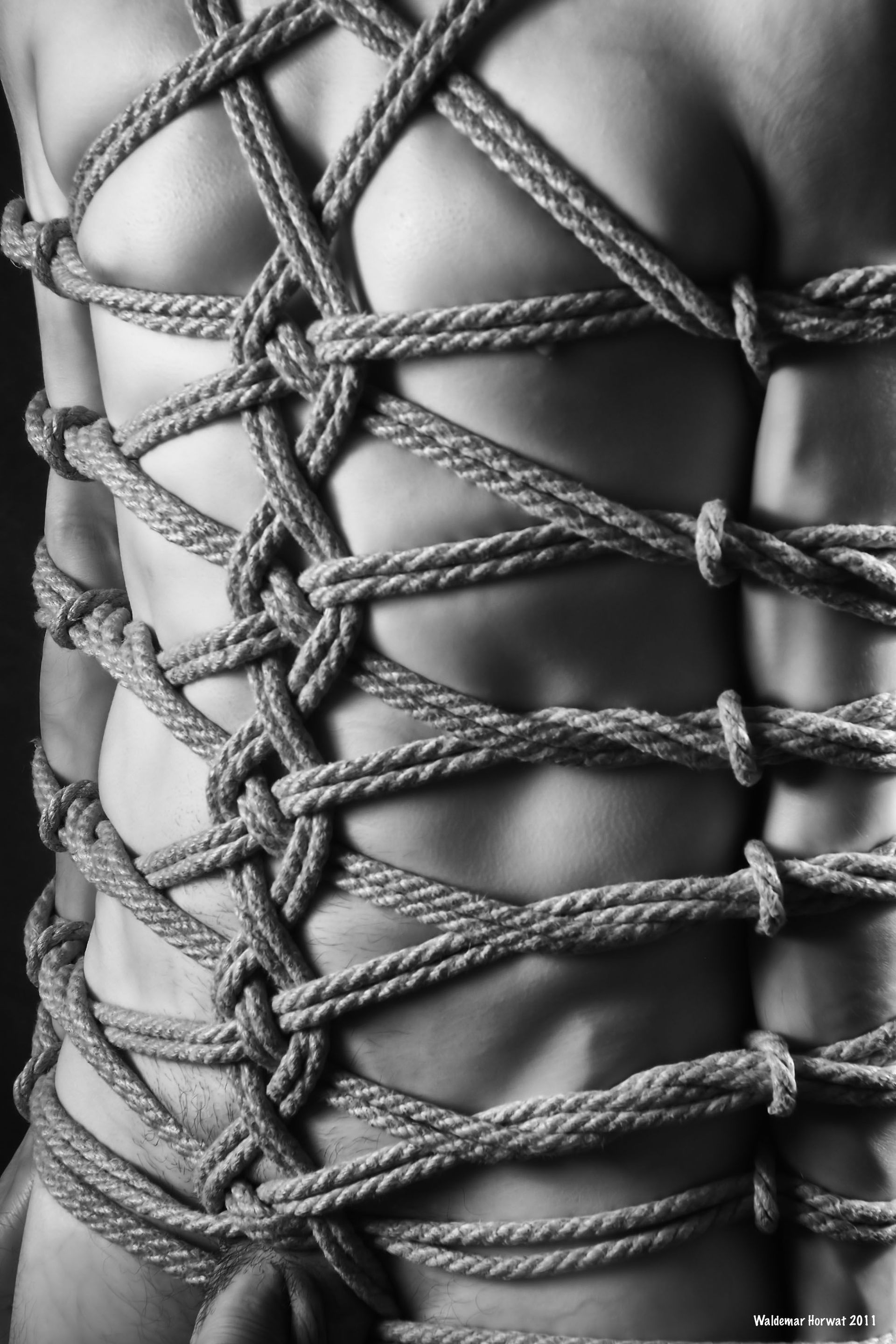Bondage is a sadomasochistic practice which consists of attaching one's partner in the context of an erotic or sexual relationship. Appearing for the first time as a practice recognized as such during the 20th century in several countries, bondage is based on a certain number of fantasies that it stages, and which can refer to ancient tortures, such as as bondage techniques used in Japan (hojōjutsu), or such as different forms of crucifixion. In addition to the ropes used to tie up your partner, bondage uses all kinds of means of restraint.
PRACTICE
Traditional kinbaku is based on string patterns, most of which have their origins in hojōjutsu. Among the different ways of binding, ushiro takatekote, basic bondage, involves binding the arms against the chest while binding the hands behind the back. The set describes a "U" shaped figure. This is the most important and most frequently used figure. Another way of doing this is the ebi or "shrimp" figure, originally a form of torture, is currently intended to make the bound person's appearance more vulnerable and submissive during BDSM scenes.
The traditional kinbaku is practiced with links seven meters in length. Due to the physical differences of the participants in Western BDSM, eight-meter ropes are used instead. The ropes are usually made of jute or hemp (but not sisal or manila hemp) specially treated to obtain a rope that is robust, flexible and soft to the touch. Other materials are sometimes used. For historical reasons, kinbaku rarely uses knots (sometimes not at all). If there are any, they are slip knots or blocking knots, both of which require materials with high friction power and therefore rough. According to Nawa Yumio's book published in 1964, knots are considered particularly unsightly. Bindings with knots were not considered bondage.


BONDAGE QUIZ
- Bondage (heavy, difficult)
- Bondage (long period
- Bondage (in public, under clothes)
- Bondage with ropes
- Complex rope bondage (Shibari)
- bondage with chains
- Bondage with straps
- Handcuffs (leather)
- Handcuffs (webbing)
- Handcuffs (metal)
- Armbinders (arm immobilization scabbard)
- Leather Complex Restraint Equipment
- Harness (rope)
- Harness (leather) Straitjacket
- Spreader bars
- Hands tied behind the back
- Hands tied in front
- Feet tied
- Tied standing arms raised apart or not
- Tied arms behind and raised
- Suspension in a standing position
- Suspension arms attached behind
- Hanging (upside down)
- Hanging (Horizontal)
- Attached to trestle / donkey
- Crossing (e.g. St. Andrew's Cross)
- Pillory (layout)
- Mummification
- Wrapped in cling film
- Sleep with collar or leash
- Leashed / tethered (in private)
- Keeping on a leash / on a lanyard (in a restricted circle)
- Leashed / tethered (in public)
- Gag (linen)
- Gag (ball gag, harness)
- Gag (duct tape)
- Blindfold
- Balaclava covering the whole head (wear)



